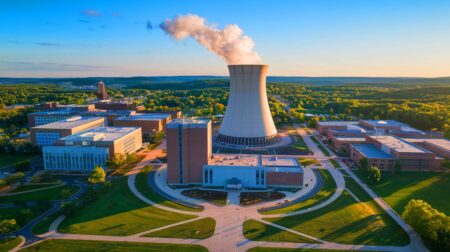| IN A NUTSHELL |
|
The Sun, our life-giving star, is under unprecedented scrutiny thanks to the world’s largest solar telescope perched atop the Hawaiian volcano Haleakala. This marvel of technology, the Inouye Solar Telescope, is equipped with a four-meter primary mirror that delivers breathtakingly detailed views of the Sun’s smallest structures. Since its inception in 2022, this incredible observatory has pushed the boundaries of solar observation, continuously being outfitted with advanced scientific instruments to unlock the Sun’s deepest secrets. The latest addition, the Visible Tunable Filter (VTF), marks a significant milestone in solar observation.
VTF Sees First Light
The newly integrated VTF instrument is a behemoth, weighing approximately 12,300 pounds and occupying a space akin to a small garage. Its primary mission is to capture images of the Sun with unparalleled detail concerning spatial, temporal, and spectral information. Recently, the VTF achieved a significant milestone by seeing its first light, meaning it captured its inaugural images of the Sun. This initial observation targeted sunlight at a specific wavelength of 588.9 nanometers. During this first detailed examination, a dark sunspot and its intricately structured surrounding area, known as the penumbra, were revealed. The observed region on the Sun was enormous, spanning roughly 15,500 miles by 15,500 miles. As Sami K. Solanki, director at the MPS, remarked, “VTF enables images of unprecedented quality and thus heralds a new era in ground-based solar observation.”
Decoding the Sun’s Dynamic Nature
The Sun, a gigantic ball of plasma, is a source of constant activity that influences the entire solar system. It frequently unleashes powerful eruptions that send charged particles into space. While these solar eruptions can create stunning auroras on Earth, they can also impact the functionality of space infrastructure and power grids. The VTF’s primary focus is to unravel our host star’s dynamic nature. This high-tech instrument allows scientists to observe the photosphere (the Sun’s visible surface) and the chromosphere (the layer above it) with unprecedented detail—regions where solar eruptions originate. Understanding the complex interactions between hot plasma and changing magnetic fields in this region is key to predicting these powerful solar events.
At the core of the VTF are two incredibly precise Fabry-Pérot interferometers. These sophisticated components enable the VTF to filter incredibly narrow slices of visible sunlight, with an accuracy of just a few picometers. This colossal instrument decodes properties of the solar material, such as the speed of plasma flows, the strength of magnetic fields, pressure, and temperature. This detailed information is vital for understanding the fundamental processes driving solar activity.
The Inouye Solar Telescope: A Platform for Innovation
The Inouye Solar Telescope was meticulously designed to study the underlying physics of the Sun as a driver of space weather. In pursuing this goal, it serves as an ideal platform for pioneering instruments like the VTF. Christoph Keller, Director of the National Solar Observatory, which operates this telescope, stated, “The Inouye is a platform for an unprecedented and pioneering instrument like the VTF.” This telescope is not only advancing our understanding of the Sun but also setting the stage for future innovations in solar observation technology. The insights gained from the Inouye Solar Telescope will enhance our ability to predict solar storms that can potentially disrupt satellites, communication networks, and even terrestrial power infrastructures.
Significance of Advanced Solar Observation
The advancements in solar observation, especially with the integration of the VTF, are significant for both scientific exploration and practical applications. By providing detailed insights into the Sun’s behavior, these observations help scientists develop models that predict solar activity and its potential impacts on Earth. The ability to anticipate solar storms and other solar phenomena is crucial for protecting technological infrastructure and ensuring the safety of astronauts in space. Moreover, understanding the fundamental processes that drive solar activity contributes to broader astrophysical knowledge, potentially influencing how we study other stars and their interactions with surrounding planets.
The collaborative efforts of scientists and engineers in developing and deploying the VTF highlight the importance of interdisciplinary work in advancing space research. As we continue to explore the cosmos, the innovations in solar observation stand as a testament to human curiosity and ingenuity.
As we delve deeper into the mysteries of our Sun, the question remains: How will these groundbreaking observations transform our understanding of the universe and our place within it?
Did you like it? 4.4/5 (21)











This is amazing! How does the VTF compare to other solar instruments? 🌞